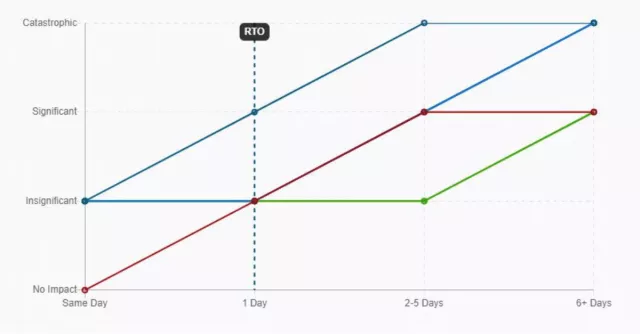3 Vital Steps for Creating a Business Continuity Plan

Developing a business continuity plan is crucial in today's unpredictable world. Natural disasters like tornadoes in Oklahoma, hurricanes in Florida, or earthquakes in California share common traits. They're often hard to foresee and can significantly disrupt organizational operations. Despite the rise in such disasters, many companies, even those utilizing cloud services, hesitate to allocate the necessary time, resources, and budget for a business continuity plan (BCP) to safeguard their most valuable asset: their people.
If you’re still unsure about investing in a business continuity plan, consider the following facts:
- 52% of businesses experienced a business interruption in the past 5 years.
- An average cost of a data breach is $4.45 million.
- 40% of small businesses never reopen their doors following a disaster.
You could see business continuity services as an "insurance policy" your company might never need. Alternatively, you can establish a BCP to guarantee that your organization will swiftly resume operations, minimizing disruptions for your customers, staff, and partners.
Creating a Business Continuity Plan
Remember, a BCP doesn’t have to be complex or lengthy. It's just a documented set of processes designed to help a company reduce disruption to business operations during an outage.
Key steps to creating a BCP
1. Outline roles and responsibilities
A good BCP should detail what your staff needs to do in the event of a disaster, what communication methods are required, and the timeframe in which critical IT services need to be available.
- Compile a contact list of essential personnel engaged in your company’s BCP, listing names, titles, and contact details (both work and personal), such as phone numbers, email addresses, and relevant social media handles.
- Offer a thorough outline of their roles and duties, ensuring clarity on what is anticipated from each individual during an outage.
- Establish a documented procedure for updating your BCP and disseminating these updates to the team.
2. Analyze potential threats and outcomes
Take the effort to identify worst-case scenarios specific to your business, industry, and location. For instance, a Florida-based company would prioritize planning for hurricanes over earthquakes. An e-commerce firm might assess the risks and ramifications of a data breach, while a manufacturing plant could anticipate scenarios related to production downtime.
Subsequently, prioritize each potential disaster and its projected long-term impacts. Outline your team's planned response to each scenario. This exercise will establish a framework for addressing the key concerns in your BCP.
3. Factor in data loss
An essential aspect of your BCP should focus on data loss and recovery. Start by listing potential scenarios that could affect your data assets, such as deleted or corrupted files, server hardware failures, viruses, or data breaches stemming from an employee's personal laptop.
By categorizing your business operations based on these factors, you can determine the appropriate protection and recovery measures. Consider utilizing cloud-based solutions for critical data recovery, as they offer faster data access and recovery, along with the flexibility of access from any location.
Lastly, remember that the effectiveness of the plan relies on its execution. To ensure readiness, conduct tabletop exercises or full-scale tests of the recovery process. Regular drills help ensure smooth business recovery in the event of a disaster and clarify staff roles and responsibilities.


